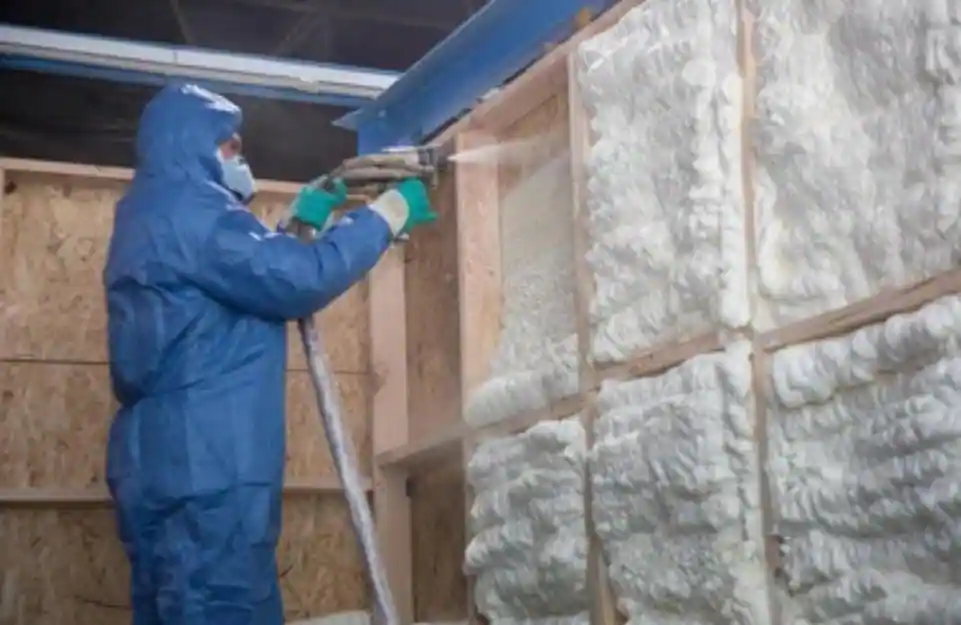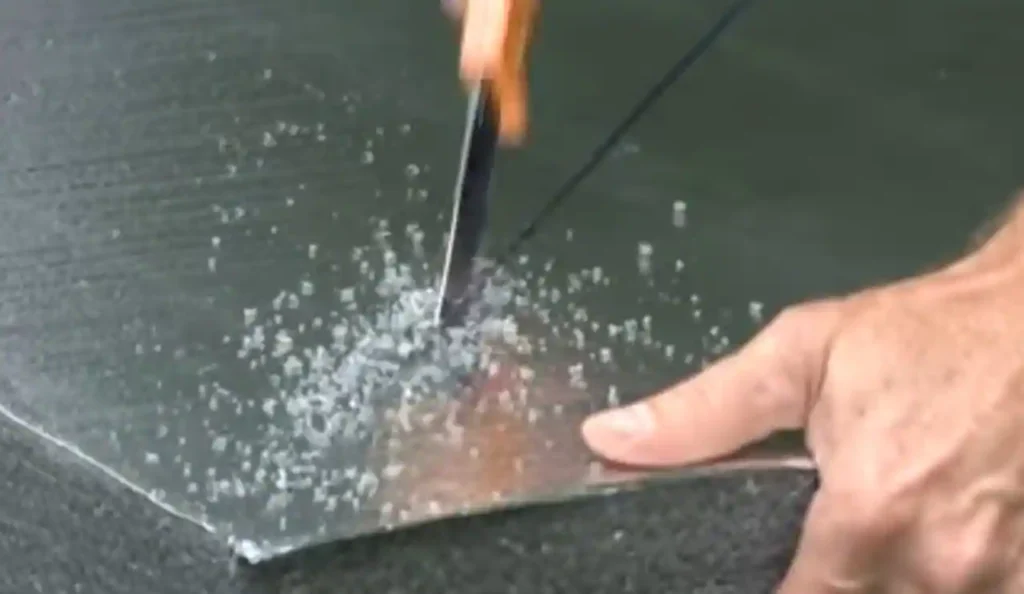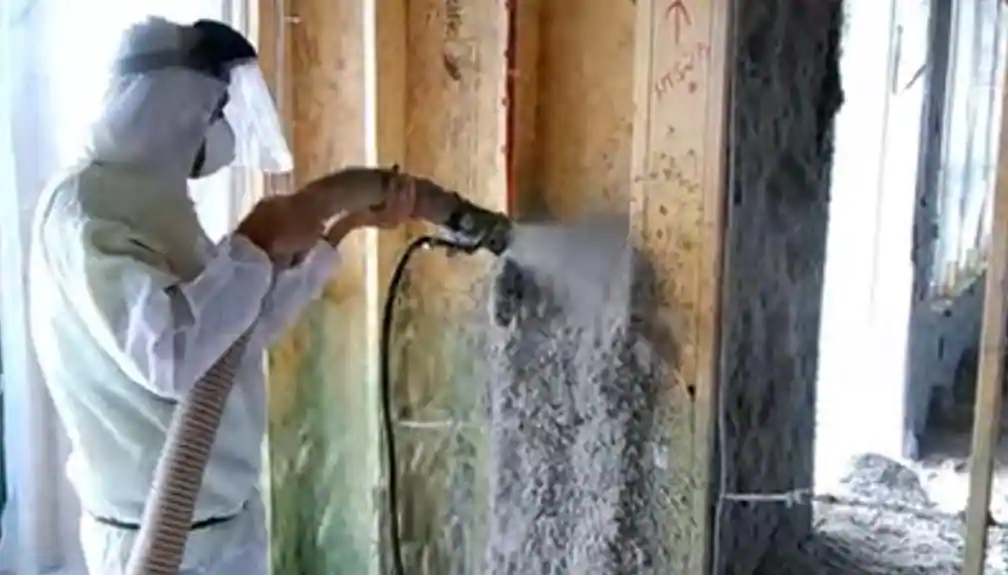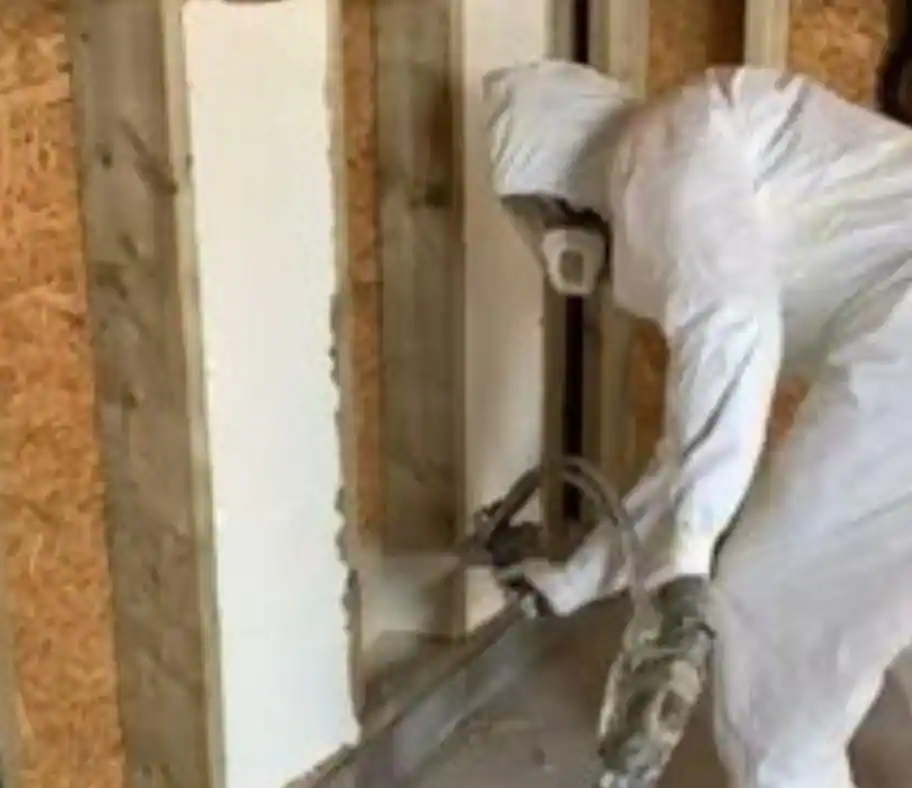How To Install Insulation In Garage Walls – Complete Guide about Energy-Efficient Garage Wall Insulation Techniques
First of all, A vital first step in improving energy efficiency, preserving appropriate temperatures, and safeguarding your items kept in the garage is insulating the walls of your garage. We will take you step-by-step through the process of properly insulating garage walls in this in-depth guide. Whether your goal is to increase energy efficiency or turn your garage into a living area, following this instruction will help you get the best possible outcome.
Why Insulate Garage wall?

It’s critical to comprehend the significance of insulating garage walls before delving into the finer points of insulation installation. You may know, How to insulate garage floor, if to don’t know the steps, then click here and read the post. Garages sometimes have inadequate or no insulation, which can result in energy loss, uncomfortable temperatures, and even moisture problems. Insulating garage walls enables you to:
Boost Energy Efficiency:
Insulation keeps your garage warmer in the winter and colder in the summer by reducing heat transfer. Lower energy costs and a decreased need for heating and cooling systems may arise from this.
Boost Comfort:-
Insulating garage walls contributes to more stable temperature maintenance, which improves occupant comfort and lowers temperature swings.
Protect Belongings:
Vehicles, tools, and equipment kept in the garage might sustain damage from temperature fluctuations that insulation can help prevent.
Reduce Noise:-
Soundproofing properties of insulation can also aid in lowering noise levels inside and outside of garages. Now that we know how important it is to insulate garage walls, let’s look at the various insulation options and how they may be installed.
Insulation Materials For Insulate Garage walls:
Garage walls can be insulated using a variety of insulation materials. Everyone has a unique set of benefits, installation needs, and financial concerns.
These are a few of the most well-liked choices:
Fibreglass Insulation:-
One of the most often used types of insulation is fiberglass insulation. It comes in rolls or batts and is made of fine glass fibres. Fiberglass insulation has good thermal insulating qualities, is reasonably priced, and is simple to install.
Foam Board Insulation:

Polystyrene or polyurethane foam is used to make foam board insulation, sometimes referred to as rigid foam insulation. It has superior thermal insulation qualities and is available in rigid panels. Because it resists moisture, foam board insulation is a viable option for garage walls.
Spray Foam Insulation:
Applied to fill spaces and form an airtight seal, spray foam insulation is a flexible solution. It may be used in rooms with uneven shapes and has excellent thermal insulation qualities. However, spray foam insulation can be more expensive than other solutions and usually requires professional installation.
Cellulose Insulation:
Fire retardant-treated recycled paper fibres are used to make cellulose insulation. It is safe for the environment, offers effective thermal insulation, and may be blown into wall cavities with the use of specific tools.
A number of considerations, including cost, insulation effectiveness, and installation needs, must be taken into account when selecting an insulating material. If you’re not sure which kind of insulation is ideal for your garage walls, it’s important to carefully assess your unique needs and speak with an expert.
Installing Insulation In Garage Walls
Collecting the Required Tools and Materials:
Prior to beginning the insulation installation, assemble the necessary equipment and supplies, such as:
Material for insulation- how to install insulation in garage walls
An insulation cutter or utility knife
Measurement tape Linear edge
Security gloves and goggles mask for respirators (in the case of spray foam insulation)
Foam sealant and a caulking gun (for sealing gaps) stud finder, if required
Drill or screwdriver (to secure insulation)
Installation Techniques:– how to install insulation in garage walls
After deciding on the right insulation material, you need to think about how to apply it. Installing insulation rolls or batts and blowing in loose-fill insulation are the two main ways to insulate garage walls.
How to Install Rolls or Btts of Insulation:
Measure the wall cavities:
To estimate how much insulation is required, start by taking measurements of the wall cavities.
Cut the insulation:- installing insulation in garage walls

Cut the insulation rolls or batts so they will fit tightly into the wall cavities using an insulation cutter or utility knife.
Install the insulation:
Press the insulation into the wall cavities, making sure the material fits snugly without being compressed. If required, secure the insulation in place using insulation supports or staples.
Close gaps and seams:
To create an airtight barrier, close any gaps or seams in the insulation with tape or foam insulation sealant.
How to Install Loose-fill insulation, blowing:
Set up the area:
Put in baffles or netting:
To keep the loose-fill insulation in place and stop it from settling, install baffles or netting.
Fill the insulation:- Installing insulation in garage walls
Fill the blowing machine with loose-fill insulation in accordance with the manufacturer’s recommendations.
Apply the insulation:
Beginning at the bottom of the wall cavities and working your way up, use a blowing machine to evenly apply insulation.
Fill the cavities:- Blow In Insulation Garage Walls
Don’t overfill or pack the insulation too firmly; instead, keep filling the cavities with insulation until they are filled. To guarantee appropriate insulation performance and longevity, it’s.
An investment well spent, insulation for garage walls can boost comfort, lower energy costs, and safeguard your possessions. You may save energy costs as well as create a more livable functional space by selecting the appropriate insulation material and installation technique. The benefits you will get after insulating garage walls for homeowners are numerous, regardless of whether you’re turning your garage into a dwelling space, or workshop, or just want to boost insulation performance.
Blow In Insulation Garage Walls

Optimising Energy Economy- A Handbook on Blow-In Insulation for Garage Wall Applications
Garages have a big impact on a home’s total energy efficiency, but they are frequently disregarded when it comes to insulation. In addition to assisting in keeping the garage at a pleasant temperature, proper insulation promotes energy efficiency and environmental sustainability. The use of blow-in insulation is one efficient way to insulate garage walls. We’ll go into great detail about blow-in insulation for garage walls in this tutorial, including its advantages, how it’s installed, and things homeowners should know.
Blow-In Insulation, this insulation is often referred to as loose-fill insulation, blow-in insulation is a kind of fiber- or particle-based thermal insulation. Mineral wool, cellulose, and fiberglass are common materials for blow-in insulation. Using specialized equipment, these materials are blasted into holes or spaces to fill in gaps and produce a smooth layer of insulation.
Benefits of Garage Wall Blow-In Insulation:
You will get the following benefits after insulating your garage walls by using blown in insulation, let’s see which are they-
Improved Thermal Performance:
By preventing heat from passing through garage walls, blow-in insulation helps to keep the interior of the space at a constant temperature.
Enhanced Energy Efficiency:
Blow-in insulation minimizes heat gain and loss, which lowers the requirement for heating and cooling and, consequently, energy use and utility costs.
Enhanced Comfort:- Blow In Insulation Garage Walls
Regardless of the outside weather, installing blow-in insulation on garage walls makes the interior more comfortable for residents. Sound dampening: Blow-in insulation can lessen noise transmission in addition to thermal insulation, which will quiet and calm the garage.
Resistance to Moisture:
Because of their natural ability to withstand moisture, some blow-in insulation materials, such as cellulose, can help stop the growth of mold and mildew.
How To Install blown in insulation on garage walls:
To insulate your garage walls by using Blown-in Insulation you have need to follow the following step for insulate installation-
Preparation:- how to install blown in insulation garage walls
Make sure the walls are clear of impediments, dry, and clean before adding blow-in insulation. Clear the cavity of any debris or insulation that may be present.
Setup of Equipment:-
Follow the manufacturer’s directions for setting up the blow-in insulation equipment. This usually entails setting up the hose for effective insulation distribution and plugging in the insulation blower.
Insulation Application:
Fill the insulation blower hopper with the chosen blow-in insulation material. To ensure consistent coverage, start filling the wall cavities from the bottom and work your way up using a sweeping motion with the hose.
Density Adjustment:
To obtain the required R-value and efficiently fill in any gaps or holes, adjust the density of the blown-in insulation as necessary.
Final Touches:- blown in insulation garage walls
To guarantee maximum insulation effectiveness and stop air leakage, seal any access points or holes in the wall cavities once the insulation has been installed.
Professional Installation:
Although blow-in insulation can be installed yourself, working with a professional insulation contractor can guarantee correct installation and best outcomes.
Building rules and laws:
To guarantee compliance, familiarise yourself with the local building rules and laws pertaining to the minimum insulation requirements for garages.
Benefit-Cost Analysis:
To calculate the return on investment, weigh the initial cost of installing blow-in insulation against the possible energy savings and long-term advantages.
Observation and upkeep:- installing insulation in garage walls
To stop more damage to the insulation and underlying structure, periodically check the garage walls for evidence of moisture or damage. Lastly, we like to say,If you find any, take quick action to repair the problem. To evaluate the performance of the insulation as well as spot any possible areas for improvement and keep an eye on your energy bills.
In summary, we can say about, blow-in insulation is an economical and effective way to insulate garage walls, enhancing overall comfort as well as energy efficiency, both thermal performances.
Homeowners can improve the energy efficiency of their garages and dwellings by making educated judgments by being aware of the advantages, installation procedure, as well as associated factors. Blow-in insulation for garage walls is a wise investment in sustainable living, regardless of your goals—reducing energy costs, maximizing comfort, or minimizing environmental effects.
Cost To Insulate Garage Walls
There are several advantages to insulating your garage walls, including increased energy efficiency and a more comfortable area for a variety of uses.
Let’s find out how much garage wall insulation costs.
Cost of Insulating Garage Walls:
Depending on several variables, such as the size of the garage, the type of insulation selected, and whether you want to do it yourself or employ a professional, the cost of insulating garage walls can vary.
The possible costs are broken down as follows:
According to insulation experts cost to insulate garage walls depends upon the following factors-
1. Materials:- cost to insulate garage walls
Buying insulation materials is the main expense associated with insulating garage walls. Foam board insulation, spray foam insulation, and fiberglass batts are typical choices. The cost per square foot can vary between $0.50 and $3.00 based on the kind and caliber of insulation selected.
2. Tools and Equipment:
Depending on the extent of the insulation project, you may need to make an investment in certain tools and equipment. These may include safety gear, utility knives, tape measures, and even a compressor and spray gun for spray foam insulation. Although these are usually one-time expenses, they can mount up.
3. Labour:- cost to insulate garage walls
The cost of labour will be included in the overall cost if you choose to have the insulation installed by a licenced contractor. The cost of labor for insulating a standard-sized garage normally ranges from ,$1000 to,$3000, depending on the location and complexity of the operation.
Bottom Line of The Post, How to install insulation in garage walls and cost to insulate garage walls
In the end, we must say, that safeguarding stored goods, increasing comfort, and increasing energy efficiency all depend on properly installed garage wall insulation. You may get the best results and profit from a well-insulated garage for many years to come by following the step-by-step directions provided in this book and choosing the appropriate insulation materials. Any garage owner wishing to optimize energy savings and comfort should invest in insulation, whether they choose to hire a professional contractor or take on a do-it-yourself job. We hope you understand, How to install insulation in garage walls and how to use blown-in insulation garage walls along with the cost to insulate garage walls
Do let us know how you feel about this information by commenting.
Like our Facebook page and follow for other updates like this.

